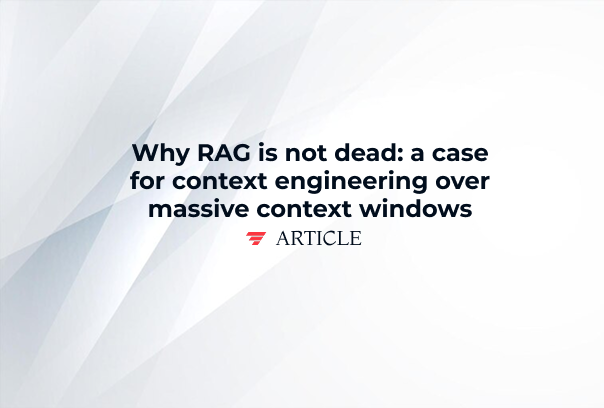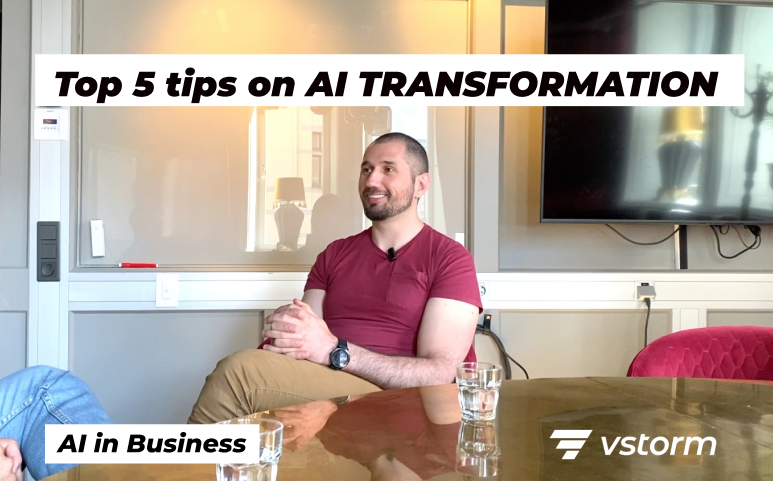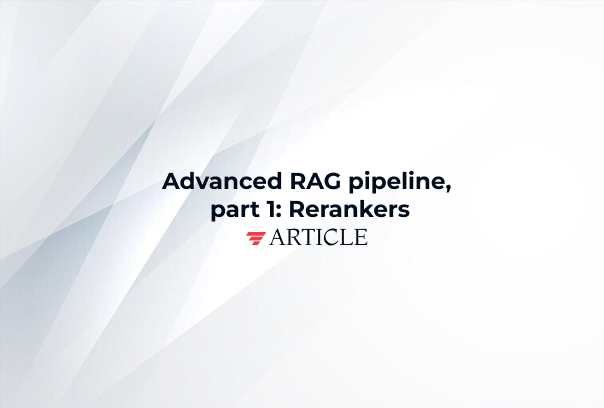RAG (Retrieval-Augmented Generation)
What is Retrieval-Augmented Generation?
Retrieval-Augmented Generation (RAG) is an approach that combines the generative capabilities of large language models with information retrieval from external sources.
Rather than relying solely on the static knowledge embedded in an LLM’s training data, RAG pulls information in real time from external sources — whether proprietary databases, private document collections, or web resources.
By integrating current, context-specific data into the model’s workflow, RAG improves accuracy, relevance, and reliability of generated responses.
This approach proves particularly valuable for:
- proprietary or sensitive knowledge,
- information that changes frequently,
- or domains where factual precision is critical.
In practice, RAG functions as an information bridge:
- The retrieval component identifies the most relevant documents or facts from designated knowledge sources.
- The generation component then uses this information to construct precise, context-aware responses.
This integration extends LLM capabilities beyond their original training boundaries, making them more adaptable and effective in handling complex, dynamic scenarios.
RAG has become a foundational technology for enterprise AI deployments where accuracy and reliability matter.
Why do we need RAG?
Large Language Models have become standard tools in many workflows. We use them because they deliver practical answers to our questions. Unlike traditional search engines that return links, LLMs provide structured responses.
Yet like any technology, LLMs have specific limitations — and that’s where RAG (Retrieval-Augmented Generation) becomes necessary.

Motivation and context: how RAG emerged
One fundamental challenge with standard LLMs is that their knowledge remains static. They can only generate responses based on their training data. No matter how comprehensive that dataset, it will never include your specific organizational knowledge or the most current information.
Consider a practical example: your organization has unique processes and procedures — there’s no way a general-purpose model would know them. You cannot ask the model to retrieve or modify your specific procedures because they do not exist in its training data.
Another challenge is hallucination — when the model lacks information, it may generate plausible-sounding but incorrect responses.
(Example: Querying an LLM about a non-existent company’s CEO might produce a fabricated name.)
The most significant limitation from an operational perspective is that updating a language model requires substantial investment. It means retraining the entire model, which demands both time and computational resources.
To address these practical challenges, RAG was developed.
Instead of retraining the entire model, we attach an external knowledge base and enable the model to retrieve relevant information as needed. This approach enriches responses without modifying the core model.
How does Retrieval-Augmented Generation work?
Let’s examine how RAG is architected and operates in production environments.
The core principle: when processing a query, the model does not rely solely on embedded knowledge. Instead, it creates a query, retrieves relevant information from connected knowledge bases, and uses that information to generate accurate, grounded responses.
Here’s the step-by-step process:
Two main components of RAG
RAG operates through two key components:
1. Retriever
This component handles information discovery. The process works as follows:
- It takes your input question (the prompt) and converts it into a numerical representation — a vector — using an embedding model.
- It then compares that vector to entries in a vector database — a specialized system storing knowledge chunks (documents, text passages) in vector form.
- The retriever identifies the most similar entries and returns the top results — the most relevant documents.
These documents are not presented to users directly — they proceed to the next stage.
2. Generator
This component produces the final response:
- The generator combines the original user prompt with retrieved documents to build an augmented prompt.
- This enriched prompt is sent to a language model (LLM), which uses both the user’s question and the retrieved context to generate the final response.
Through this mechanism, the LLM accesses real, external knowledge — not just what was encoded during training.

Pros and Cons of RAG
Like any technical solution, Retrieval-Augmented Generation brings both advantages and trade-offs. Let’s examine these in practical terms.
Pros
- Access to current information – RAG enables models to pull real-time or recently updated data from external sources — essential for scenarios requiring accurate, current information.
- Reduced Hallucination Risk – by grounding responses in retrieved documents, RAG significantly reduces instances of fabricated information.
- No costly retraining required – rather than retraining large language models when knowledge changes, RAG allows you to update or expand external databases — saving time, compute resources, and budget.
- Personalization & custom knowledge – you can connect proprietary documents, manuals, or business data, making the LLM useful for your specific domain without model fine-tuning.
- Modular architecture – retriever and generator components remain decoupled, enabling independent experimentation or upgrades (such as swapping embedding models or vector databases).
Cons
- Retrieval quality determines output – response accuracy depends heavily on retrieval quality. If irrelevant or poor-quality documents are returned, the final output suffers.
- Latency and complexity – adding retrieval steps increases response times and introduces infrastructure complexity (vector databases, embedding models, etc.).
- Chunking and preprocessing requirements – all knowledge sources must be preprocessed, embedded, and stored in vector form — adding operational overhead and computational requirements.
- Not 100% reliable – even with RAG, models can misinterpret retrieved content or combine facts incorrectly. Grounding improves accuracy but does not eliminate all errors.
Use Cases for RAG
RAG delivers value in scenarios where knowledge is too large, dynamic, or specialized to embed in a static model. Here are proven applications where RAG provides measurable benefits:
1. Internal company knowledge systems
Helpdesk assistants who answer employee questions based on internal documentation, policies, or onboarding materials.
Example: “What’s the company policy on remote work in Germany?”
2. Document search solutions
Enable users to search across large document sets (PDFs, Word docs, contracts, legal documents) using natural language.
Example: Query legal archives and receive answers grounded in case history.
3. Educational and Research Tools
Allow students or researchers to query databases or research papers — eliminating manual review of dozens of sources.
Example: A medical student queries about a rare disease and receives responses grounded in clinical studies.
4. Financial and market analysis
Enable analysts to query real-time market data, financial reports, or investor documents.
Example: “How did Apple’s Q2 2024 earnings compare to Q2 2023?”
5. Technical support & DevOps solutions
Pull answers directly from engineering wikis, code documentation, or internal knowledge bases.
Example: “How do I set up Kubernetes logging in our environment?”
6. Legal and regulatory compliance systems
Support legal professionals by retrieving current regulations or clauses relevant to specific jurisdictions or contexts.
Want to learn how these AI concepts work in practice?
Understanding AI is one thing. Explore how we apply these AI principles to build scalable, agentic workflows that deliver real ROI and value for organizations.




